Wild edibles and medicinal plants can be found along the span of the almost 2,200 mile Appalachian Trail. Foraging was once a necessary skill that came to our ancestors almost as easily as the breath that filled their lungs. Although hunting for food in the forest is not as prevalent among people today, it is nice to reconnect with nature by identifying and enjoying fresh foods while hiking and backpacking. Also, if you’re like me, eating out of a box (ramen, rice sides & pasta sides) gets old anyway, so reaping some benefits from the forest will help spice things up a little!
(WARNING: Many wild plants and mushrooms have “look-alikes” that can be poisonous or toxic to your body. Be sure to learn these edibles and be 100% confident in your identifications before eating anything in the woods. It’s best to have a mentor to show you. Luckily, there were several people I met during my thru-hike that helped me learn more about wild edibles.)
During my AT thru-hike, I was fortunate to try several different edible treasures from the woods. Below I have listed my top 5 favorites. Keep in mind, I was NOBO (northbound) from March 29th to October 19th, so if you’re hiking during those times you will likely see some of the same types of edibles. Okay, here we go:
#5: Ramps (Wild Leeks)
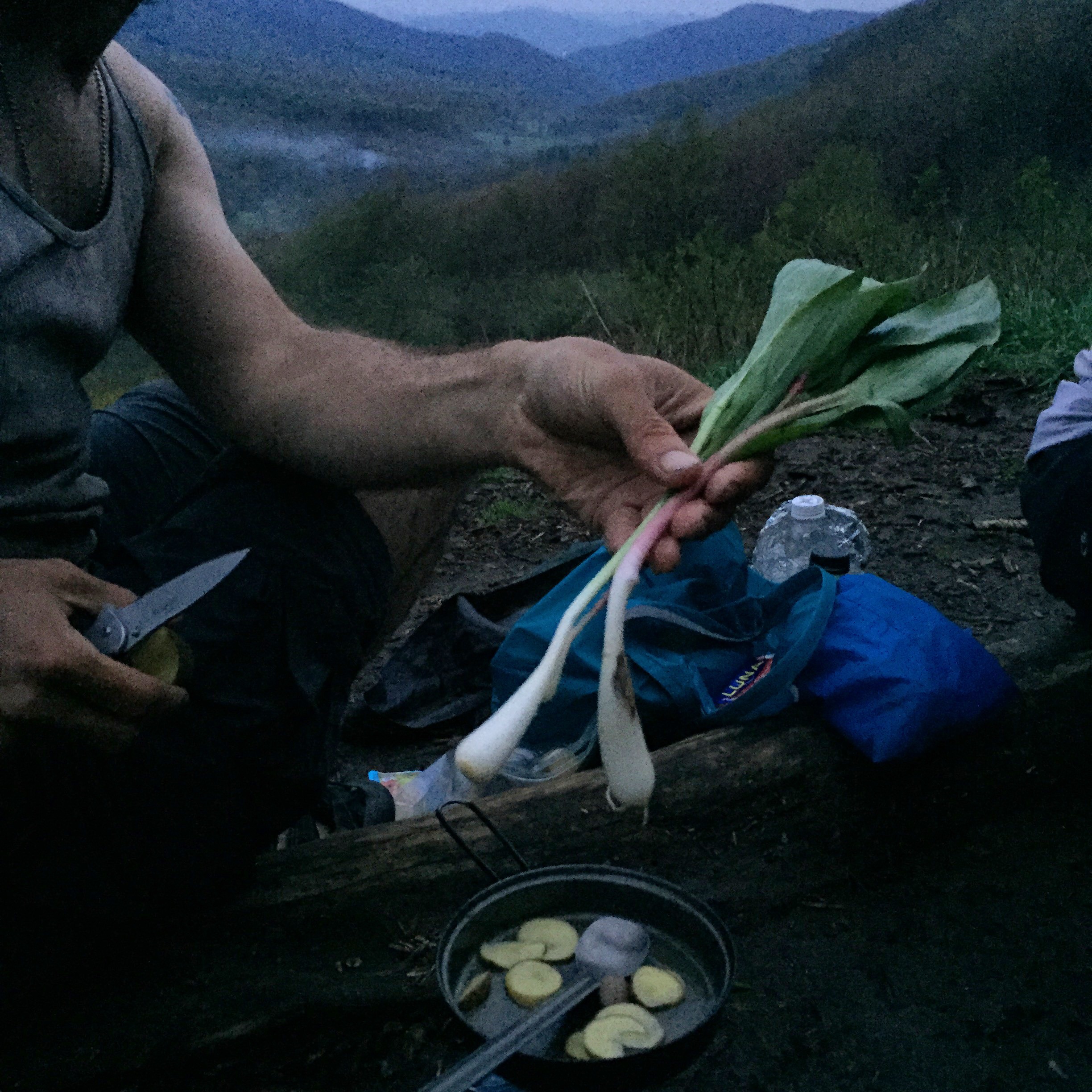
Ramps are essential wild onions with a garlicky flare. You will recognize them by their 1-2 broad leaves that are approximately 1-2″ wide and 4-12″ long. They are wonderful to add to meals or can be eaten alone. The bulb and leaves are edible and tasty. I sliced up the bulbs, chopped the leaves, and sauteed it all with a little olive oil over the fire.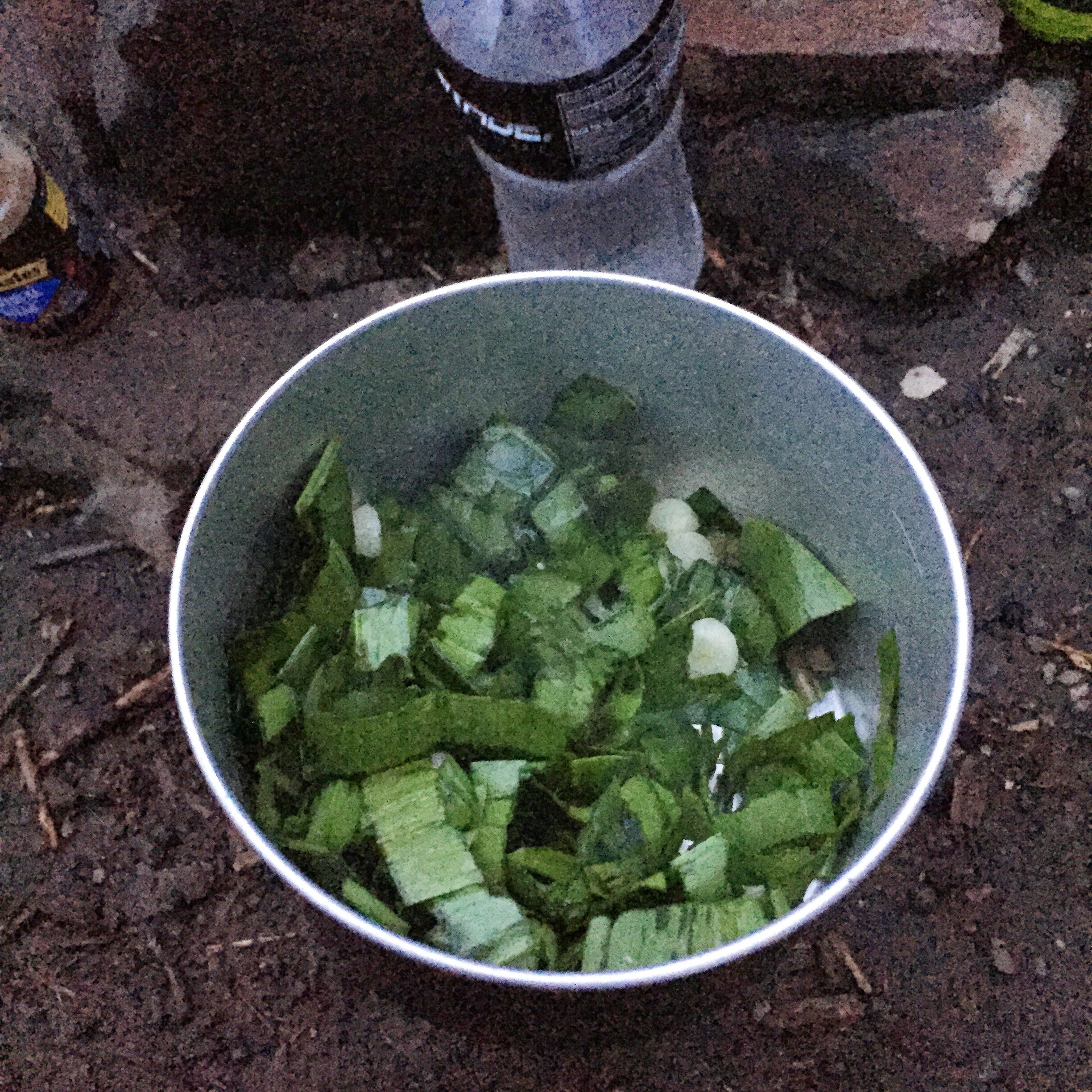
Be sure when you harvest that you have next year’s hikers in mind. Because people often pull up the entire bulb, the population of ramps is declining along the trail. To harvest properly, dig back the soil and cut the ramp at the base of the bulb above its roots. Leaving a portion of the bulb and roots allows for regeneration.
#4 Crawfish, Crawdads, Crayfish (but not Craydads)
Although crawfish are not plants or mushrooms, they ARE edible (and tasty) so I had to include them! Crawfish, in my mind, are miniature freshwater lobsters. Because some of my trail friends had never tried them, it was pretty exciting to catch some and add them to our dinner menu. Be aware, though, some states require you to have a fishing license while catching crawfish.
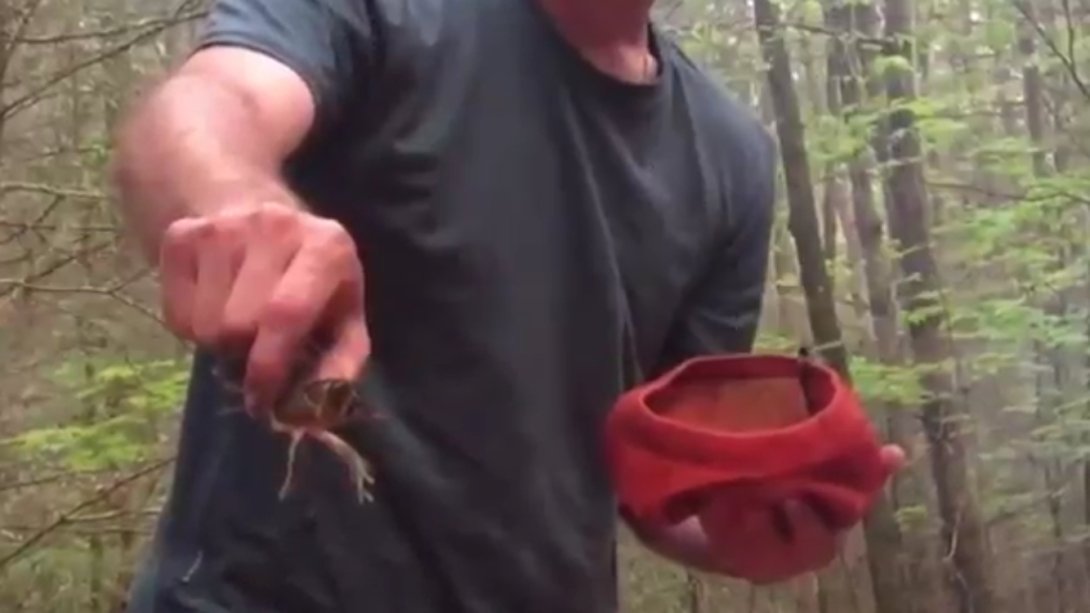
Something one of my trail friends brought to light while eating some of the small crustaceans is everyone always calls them, “crawfish, crawdads, or crayfish, but never craydads.” Why is that?
#3 Chicken of the Woods (Sulphur Shelf Mushroom)
Chicken of the Woods was my favorite mushroom on trail. Some people say it “tastes like chicken” and can even be substituted in place of chicken for a vegan diet in regards to flavor and even protein content. I can’t speak to that, but I can tell you that it is enjoyable to eat. You will notice this orange and yellow fungi growing in “shelf” like formations especially on oak trees. When selecting your harvest, be mindful to choose the more tender and younger growth as it more tasty.

We cut the harvest into pieces and simply sauteed it over the fire in olive oil, with a sprinkle of salt and pepper. If you don’t try any other mushroom while hiking the AT, you should find someone who can help you identify and prepare Chicken of the Woods.
#2 Fiddleheads
Emerging fern fronds that have yet to uncurl are termed “fiddleheads.” These will likely be seen in early spring when the forest is just beginning to wake up from winter.
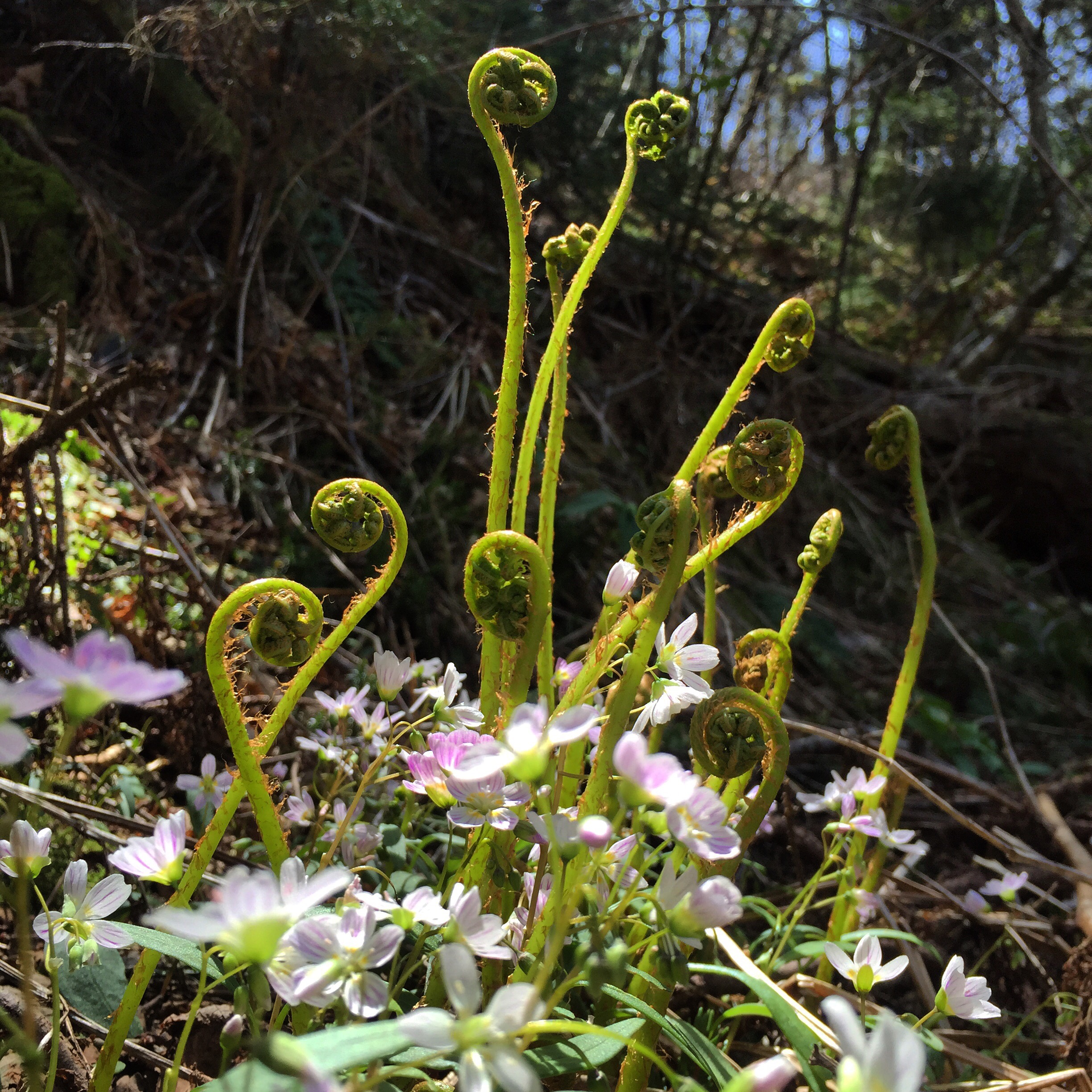
With a pocket knife they are easy to harvest and toss into a pot to sautee with a little olive oil, salt and pepper. Not only do they have a good flavor, but they also contain Omega-3 and Omega-6 fatty acids, and are a good source of iron and fiber.
#1 ALL OF THE BERRIES!
Okay, so I kind of cheated on this one, but seriously I couldn’t choose between all of the berries. The great thing about berries is they are delicious and typically packed with antioxidants. Not only did I get to eat some of my all time favorites while on the AT, but I was also able to discover new berries! Here are my on-trail favorites:
Blueberry – I started seeing these around Tennessee and saw them up until New York (at least). Blueberries are easy to identify.

Strawberry – I had never eaten wild strawberries before, and boy was I missing out. I first spotted them in Virginia.

Mulberry – Because I had never seen mulberries, I was very confused when I first spotted what appeared to be blackberries on the ground, but no nearby bushes. Finally I realized the berries were coming from an overhanging tree. After googling “blackberries on a tree.” I discovered my first mulberry.

Cherry – I was probably most excited to see wild cherries growing. I found a few trees in during the small stretch in Maryland and that was all I saw of them.

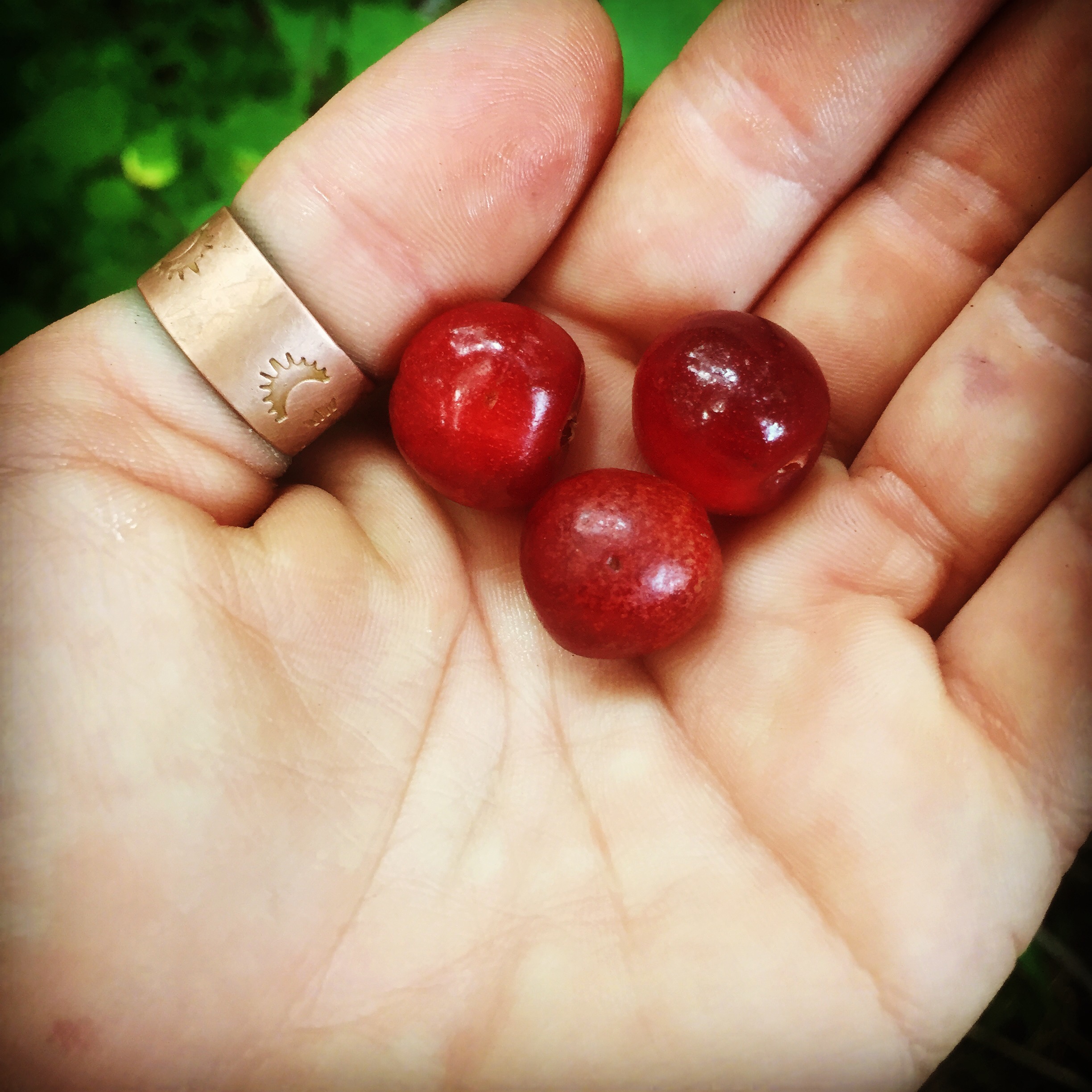
Wineberry – This was my FAVORITE berry on the AT and I harvested the most in Pennsylvania. It’s a variety of raspberry that is so sweet and juicy! They are easy to identify by the purple hairs leading up the stem to each berry. It appears to be a prickly plant, but the hairs are actually very soft.
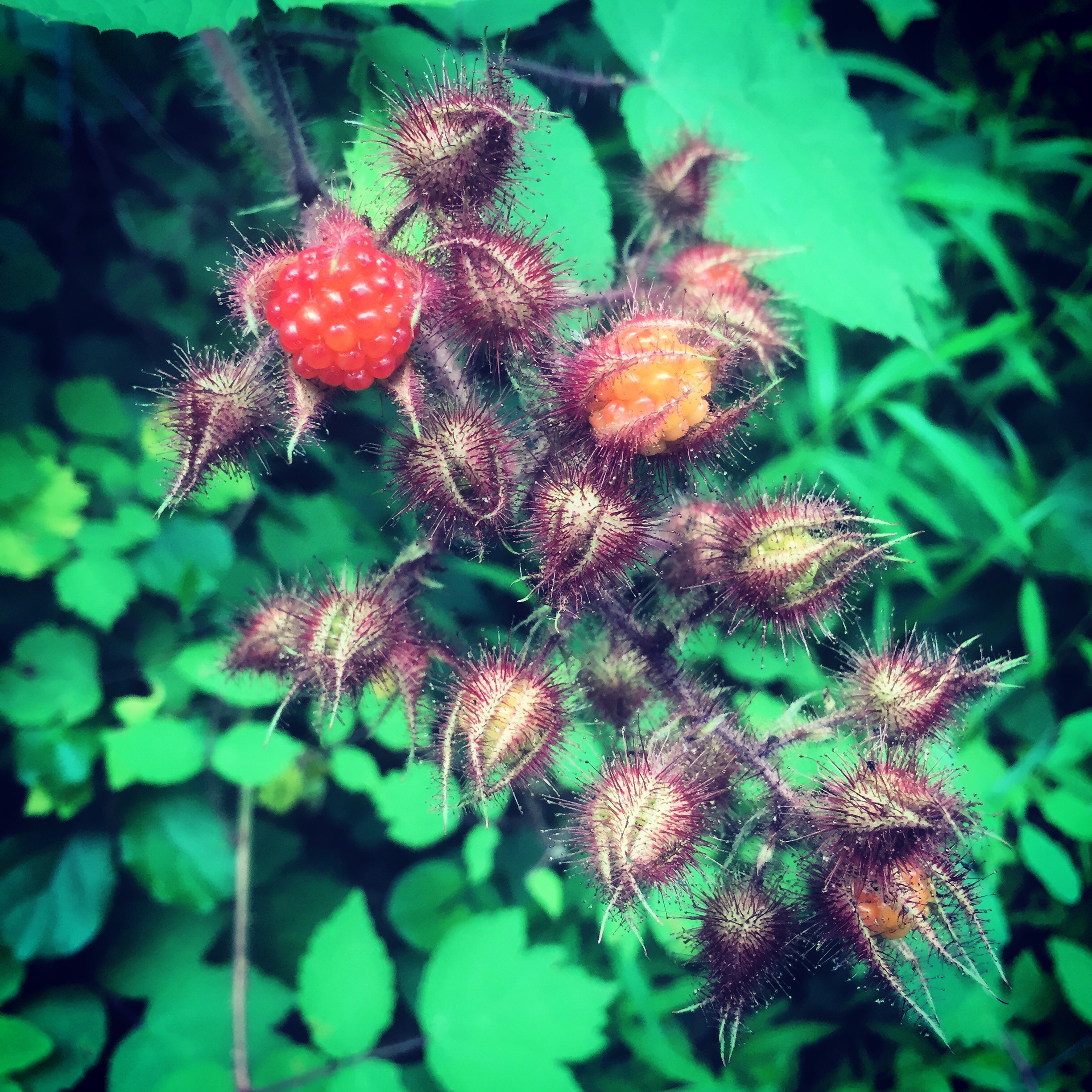
Of course these berries can be enjoyed as a simple and immediate snack, but if you have any willpower to not devour them they are good to save for adding to oatmeal in the mornings. Also, the most refreshing way to enjoy them is shaken in a bottle of water. Nothing like strawberry infused spring water to keep your body moving!

So, those are my favorites along the AT. What about you? Are there any wild edibles you are familiar with that you just can’t resist or any you’ve heard about and can’t wait to try? Feel free to share them in the comments below–
Happy Trails 🙂
-Dixie
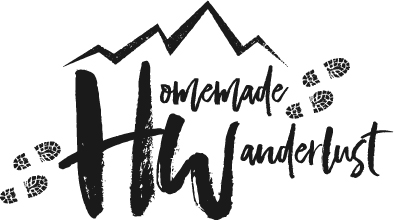
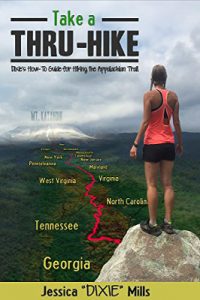
Very cool. I’ve eaten ramps before. we even get wild onion here in north florida and they are mild and garlicy. I’m really looking forward to my start next year. I got Springer Fever already. Do you have any trailside herbs I can use to calm that? 🙂
This should be a “Must Read” for every hiker hitting the trails-Anywhere! Thank you once again for sharing your seemingly unlimited knowledge of the great outdoors! Some of the edibles I recognize, others not. Thank you for taking the time to post all those pictures! It will make identifying all these goodies so much easier!!!
One of my personal favorites is morel mushrooms. Fried up with some fresh speck fillets and its a meal fit for Kings & Queens! Looking forward to trying Chicken of the Woods fungus. I have seen them many times but didn’t know they were edible. Thank You!!!!
(Sorry, they will always be Crawdad’s to me 🙂
Jessica
Your videos are so professional and inspiring. Brilliant practical advice and experience. Wish you every success with your PCT hike – will be great fun to follow along with you. Wish I could do it myself.
Rob from UK
Thank you, Robert! 🙂
You will find wild onions at least through California on the PCT. Lots of huckleberries (basically blueberries) in Oregon and Washington. Blackberries should be ripe by far northern California. If your lucky, you may find wild strawberries, thimble berries, and elderberries.
GREAT! Glad to know some of the things I have to look forward to 🙂
Not “wild,” perhaps, but there’s nothing like coming across an old apple orchard. I’ve had the good fortune to do that during some fall section hikes in TN and NC. Normally I don’t really like apples, but there’s something about the ones I find on the trail that makes them truly delicious!
AGREED!!
My mother grew up in a company house at the dam that forms Lake Britton near Burney Falls. PG&E transferred her father and tore down that house during her senior year of highschool. Whenever she was in the area though, she would pull over at the site of that house, walk around a bit, and if it was fall pick a couple of apples off the old tree that was once a part of the backyard and her childhood and now was a part of her history. That tree finally died, but in 2015, I passed through the old home while hiking on the PCT, and remembered those times with my mom and remembered her father, my grandfather, who instilled in me a love for the outdoors.
Sounds like some good memories! My Papa also had a hand in my love for nature 🙂
Where I live (North Central WV), ramp season is a huge deal. Churches in the community have ramp dinners where the entire meal has ramps in each dish somehow! Growing up in Kingwood, WV (tiny little town), a lot of my classmates were poor and lived out in the country. Our schools amhad in institute a no-ramp rule for school lunches! While they’re much milder and delicious when cooked up, they are EXTREMELY pungent raw, and that’s how a lot of folks here like to eat them. Just straight, or sometimes with a little vinegar. My fave is sliced raw cucumber and sliced ramps raw (I slice, then soak in ice water and drain to take some of the “heat” out of them.)
Even still, if you eat any decent quantity of raw ramps, your breath will stink to high heaven, and your natural scent will be tainted for 1-2 days as well. It’s pretty potent!
We also have lots of morel mushies around here which are always a treasure to find. Can’t beat ’em fried in butter! My friends forage mushies for the fancier farm-to-table restaurants in Morgantown (where I live now, and have since college), and they usually make a pretty penny off morels and hen of the woods.
Another thing we forage is ginseng. Sengin’ is fun and you can make some quick cash if you’re lucky, but if you do it in off season, you’re in deep doo doo!
I know ya’ll cooker up crawdads, but did you ever get any small game? Do people do that on the AT? I am on update 33 right now watching your thru hike and so far it seems like it isn’t a thing.
Thanks for making your videos so I can live vicariously through you! This is massively entertaining and educational!!
Thank you for all of the input! My Nan lived in Morgantown when she passed away. Seems like a cool town. I’m glad you enjoyed the videos 🙂 If you are on FB, feel free to find the Homemade Wanderlust Backpacking Forum. Here is the link: https://www.facebook.com/groups/1028390340599375/ I’m sure some folks would appreciate your knowledge of foraging.
We never did get any small game, but some ate snakes. I was never around when that happened. Thanks again for your support 🙂